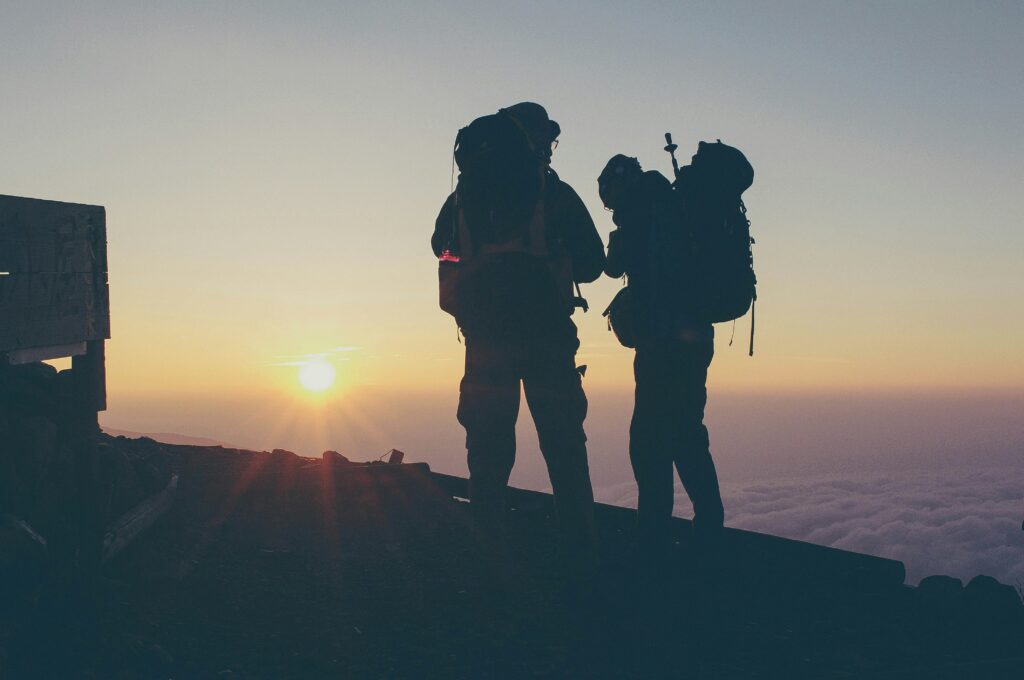How to Train for High Altitude at Sea Level
A Comprehensive Guide
Are you gearing up for a high-altitude adventure in the mountains but live somewhere closer to sea level? Training for altitude poses unique challenges, but with the right approach, you can effectively condition your body for the demands of high elevation. In this comprehensive guide, we’ll explore proven strategies for altitude training at sea level, including high altitude breathing exercises, and introduce you to Recal’s innovative program to simulate high altitude training.
Understanding the Demands of High Altitude
- Decreased Oxygen Availability: higher altitudes entail lower air pressure, leading to reduced oxygen levels, which can hamper performance and increase fatigue during exertion.
- Heightened Respiratory Demands: at altitude, your body compensates for reduced oxygen by increasing respiratory effort, potentially causing breathing difficulties and fatigue.
- Risk of Altitude Sickness: rapid ascent to high altitude can trigger altitude sickness, characterized by symptoms like headaches, nausea, and dizziness.

Effective Strategies for Altitude Training
- Aerobic Conditioning: Prioritize aerobic endurance training through activities like running, cycling, or swimming to improve cardiovascular fitness essential for high-altitude performance. According to the book Training for the Uphill Athlete, having a strong aerobic base will help immensely as you scale up the mountain.
- Interval Training: To a lesser extent, incorporate interval training sessions to mimic the intensity fluctuations experienced at high altitude, enhancing your body’s ability to adapt to oxygen fluctuations.
- Strength Training: You can focus on sport-specific muscle groups (such as quads, hamstrings, and calves if you’re running or hiking) to improve performance and prevent injuries at altitude.
- Altitude Simulation: Consider altitude simulation techniques like sleeping in a hypoxic tent or using a training mask to expose your body to simulated high-altitude conditions and promote physiological adaptations.
Introducing Recal's Altitude Training Program
- High Altitude Breathing Exercises: Incorporating specific breathing exercises to optimize oxygen uptake and improve respiratory muscle strength crucial for high-altitude endeavors.
- Simulation of High Altitude Conditions: Recal’s program simulates high altitude conditions even at sea level, allowing participants to experience and adapt to the challenges of reduced oxygen availability – even at sea level.
- Mental Preparation: Just as much as it will prepare you physically, the training is designed to cultivate resilience so that you can keep mentally sharp in those tough moments on the mountain.
Incorporating Altitude Training into Your Regimen
- Enroll in the Program: Sign up for Recal’s program to access comprehensive resources and guidance for altitude training. It is designed as a 5-week program leading up to your adventure, but you can sign up anytime.
- Consistency is Key: Commit to regular participation in high altitude breathing exercises and altitude simulation protocols prescribed by the program.
- Monitor Progress: Track your progress using the three breath assessment metrics (you learn these on Day 1 of the program), noting improvements in breathing efficiency, endurance, and mental resilience. The three assessments are:
- BOLT Score: a body oxygen level test that gauges your body’s automatic response to a CO2, as controlled by the chemoreceptors in your brain
- CO2TT: a carbon dioxide tolerance test that measures both the chemoreceptor sensitivity as well as mechanical and capacity parts of your breathing
- MBT: a maximum breathlessness test that measures your CO2 tolerance as well as psychological resilience
- Integrate with Existing Training: Ever heard of habit-stacking? Supplement your current training routine with altitude simulation exercises, incorporating them into aerobic, interval, and strength training sessions.
- They are perfect to do before a workout to open up your blood vessels and prepare your body, lungs, circulatory system, and heart for the increased workload.
Conclusion
Preparing for a high altitude endeavor in the mountains when you live at sea level requires a strategic approach focusing on optimizing oxygen utilization, enhancing respiratory muscle strength, and simulating high altitude conditions. Along with other training, Recal’s comprehensive Altitude Training program offers an effective solution, combining high altitude breathing exercises with simulation techniques to prepare individuals for the challenges of high elevation. By incorporating these strategies into your training regimen, you can maximize your performance and enjoyment during high-altitude adventures.
~ Message from Recal ~
Thanks for stopping by our blog. Here at Recal, we offer breathwork-based coaching to help you prepare for life’s greatest endeavors.
The latest program we offer is High Altitude Breathwork Training to get you ready for the mountain, even if you live at sea level. We also created Guidebook to use as a daily journaling tool; it has helped leaders around the world live more focused and fulfilling lives.
We also have a strategic partnership with Oxygen Advantage and use their products (like mouth tape for sleep and SportsMask for altitude training) to help our community become better leaders through breathwork training and proper breathing habits. You can view their online breath courses and products by clicking here.
We stand by the things that we offer and promote – and proudly use them ourselves.
If you have any questions, we’re here to help: email us at hi@recaltravel.com.
